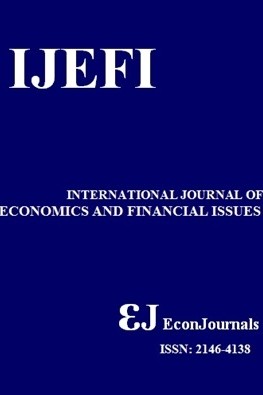From Population Age Structure and Savings Rate to Economic Growth: Evidence from Ecuador
From Population Age Structure and Savings Rate to Economic Growth: Evidence from Ecuador
Cointegration, Dependency ratio, Gross domestic product, Impulse response functions, Savings rate Structural breaks, Variance decomposition,
- Başlangıç: 2011
- Yayıncı: İlhan ÖZTÜRK
Tax Reforms and Tax Yield in Nigeria
Bassey Okon EBİ, Oluwafemi AYODELE
Analysis Z-score to Predict Bankruptcy in Banks Listed in Indonesia Stock Exchange
Muammar Khaddafi, - Falahuddin, Mohd. Heikal, Ayu Nandari
Petro Rents and Higher Education: A Cross-country Examination
Shahin Javadi, Mahmood Motevaseli, Jahangir Yadolahi Farsi
Impact of Non-Oil Export on Non-Oil Economic Growth in Saudi Arabia
Omid Ahad Pour, Peyman Imanzadeh
The Importance of Green Supply Chain Management and Its Role in Marketing Management
Moujan SHAHRİARPOUR, Akbar Alam TABRİZ
Financial Markets Integration: Appraising the Developed and Emerging Markets Nexus
Adegbemi Babatunde ONAKOYA, Victor Adedotun SEYİNGBO
Mahmoud Mahmoudzadeh, Ali Seyfi
The Effect of Surplus Free Cash Flow and Audit Quality on Earnings Management
